Grammar can feel daunting, but mastering a few key techniques dramatically improves your writing. This guide provides 20 actionable grammar hacks to elevate your prose, making it clearer, more engaging, and ultimately more effective.
Whether you’re crafting emails, blog posts, or novels, strong grammar is essential. These hacks are designed for writers of all levels—from beginners polishing their skills to seasoned professionals looking for fresh perspectives.
Get ready to ditch the grammar gremlins and unlock your writing superpowers! Let’s dive into these simple yet powerful strategies that will transform how you write.
-
Master the Comma
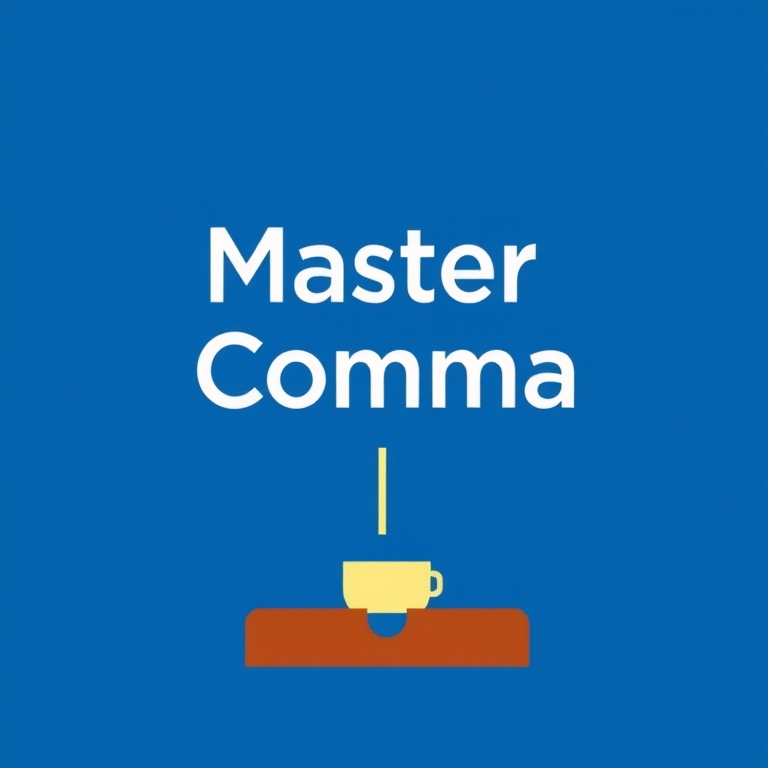
Master the Comma Mastering the comma dramatically improves clarity and flow. Avoid comma splices by using a conjunction or creating separate sentences. Practice identifying independent and dependent clauses to understand where commas belong. Remember, a comma is your friend, not your enemy!
Use commas after introductory phrases or clauses. For example, ‘After a long day, I went home.’ They also set off nonessential clauses (information that can be removed without changing the sentence’s core meaning). Don’t forget to use them with coordinating conjunctions (and, but, or, nor, for, so, yet).
Commas separate items in a series (apples, bananas, and oranges). They also delineate coordinate adjectives (the fluffy, white cat). Pay attention to the difference; only use commas between coordinate adjectives that can be reversed. Incorrect comma usage can easily confuse your reader.
Finally, practice, practice, practice! Read widely and pay attention to comma usage in well-written texts. Use online resources and style guides to clarify any doubts. Consistent practice will make comma usage second nature.
-
Conquer Subject-Verb Agreement

Conquer Subject-Verb Agreement Mastering subject-verb agreement is crucial for clear, concise writing. Identify the subject of your sentence first; it’s the noun or pronoun performing the action. Ensure your verb agrees with the subject in number (singular or plural). Simple trick: If the subject is singular, use a singular verb; if plural, use a plural verb.
Collective nouns (team, group) can be tricky. They’re usually singular unless the individuals within the group are acting separately. For example, ‘The team plays well’ (singular) versus ‘The team are arguing amongst themselves’ (plural). Pay close attention to the context to determine the appropriate verb form.
Intervening phrases or clauses between subject and verb shouldn’t confuse you. Ignore these extra elements when determining subject-verb agreement. Focus solely on the main subject and the verb. Example: ‘The list of items is long’ (not ‘are long’).
Compound subjects joined by ‘and’ usually take a plural verb. However, if the compound subject refers to a single unit, it takes a singular verb. For instance, ‘Peanut butter and jelly is my favorite sandwich,’ while ‘My friend and her dog are playing fetch’ is correct.
-
Avoid Run-on Sentences

Avoid Run-on Sentences Run-on sentences, or long sentences with multiple independent clauses, can be confusing and hard to read. Break them up into shorter, more manageable sentences. Use periods or semicolons to separate independent clauses correctly. This improves clarity and comprehension.
One easy fix is to look for conjunctions like ‘and’, ‘but’, and ‘or’ joining independent clauses. If you find one, consider creating two separate sentences. Alternatively, use a semicolon before the conjunction, or a colon if the second clause explains the first. Experiment to find the best flow.
Another helpful strategy involves identifying the main points in long sentences. Try separating these points into individual sentences, each focusing on a single idea. This enhances readability and emphasizes each key element more effectively. Consider the rhythm and natural pauses you’d use when speaking; these can guide sentence breaks.
Finally, short sentences can be surprisingly powerful. Don’t be afraid to use them to create impact or emphasis. Vary sentence length for better style and rhythm. This mix keeps your writing engaging and prevents monotony.
-
Embrace Active Voice

Embrace Active Voice Active voice makes your writing more direct and engaging. Instead of ‘The ball was thrown by the boy,’ write ‘The boy threw the ball.’ This simple change clarifies who performs the action, instantly improving clarity and impact.
Weak passive constructions often hide the actor, leading to vague or unclear sentences. Consider replacing phrases like ‘It is believed that…’ with a more active phrasing, identifying the believer. For instance, change ‘It was decided that…’ to ‘The committee decided that…’, naming the responsible party.
Vary your sentence structure to avoid monotony. While active voice is generally preferred, well-placed passive constructions can add emphasis or create a smoother flow. Don’t be afraid to experiment and find the right balance for your style.
Practice identifying passive sentences in your writing and rewriting them in active voice. Start with short, simple sentences to master the technique before tackling more complex ones. Consistent practice will refine your ability to use active voice effectively and elevate your writing’s overall strength.
-
Use Strong Verbs

Use Strong Verbs Instead of saying ‘He walked to the store,’ try ‘He strolled,’ ‘He marched,’ or ‘He dashed’ to the store. Each verb paints a different picture and adds more vividness. Strong verbs immediately engage your reader more effectively than weaker alternatives. Consider the context and choose accordingly.
Weak verbs like ‘said’ or ‘went’ can often be replaced with more descriptive alternatives. ‘She exclaimed,’ ‘She whispered,’ or ‘She declared’ are stronger options for ‘said.’ Similarly, ‘She sprinted,’ ‘She wandered,’ or ‘She crept’ replace the bland ‘went.’ Experiment with synonyms to find the perfect fit.
Don’t be afraid to use a thesaurus, but check the nuances of each word’s meaning before substituting. A thesaurus can inspire more creative and impactful verb choices. Ensure the stronger verb maintains the intended meaning and tone of your sentence. Overly dramatic verbs can be jarring if they don’t align with the context.
Active voice generally uses stronger verbs than passive voice. Instead of ‘The ball was thrown by John,’ write ‘John threw the ball.’ This simple change creates a more direct and engaging sentence. Mastering active voice significantly improves sentence structure and verb impact.
-
Precise Word Choice
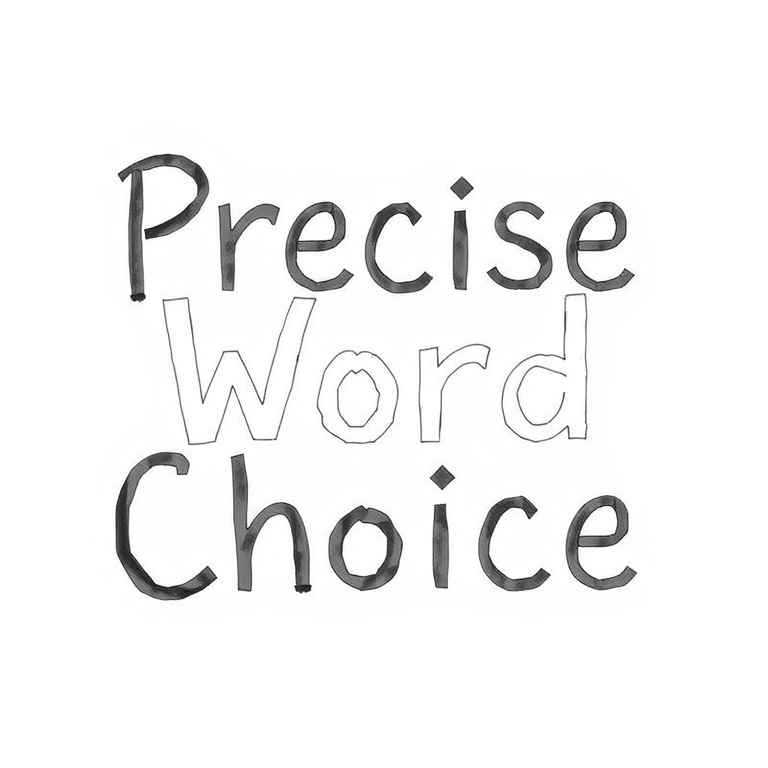
Precise Word Choice Precise word choice significantly elevates writing clarity and impact. Instead of using vague terms like ‘good’ or ‘bad’, select more specific words that convey the exact nuance you intend. For instance, replace ‘good’ with ‘excellent,’ ‘adequate,’ or ‘satisfactory,’ depending on the context.
Strong verbs are your allies in achieving precision. Avoid weak verbs like ‘said’ or ‘went’; instead, opt for verbs that vividly depict the action. Consider alternatives such as ‘exclaimed,’ ‘whispered,’ ‘marched,’ or ‘strolled’ to paint a clearer picture for your reader.
Varying sentence structure enhances readability and prevents monotony. Mix simple, compound, and complex sentences to create a dynamic rhythm. This prevents readers from getting bogged down in repetitive sentence patterns, making the text more engaging.
Mastering synonyms broadens your vocabulary and allows for subtle shifts in meaning. Use a thesaurus responsibly, ensuring the chosen synonym aligns perfectly with the intended context. Avoid overly flowery language; prioritize accuracy and clarity above all else.
-
Eliminate Redundancy

Eliminate Redundancy Redundancy weakens writing. Cut unnecessary words and phrases. For example, instead of ‘completely and utterly destroyed,’ use ‘destroyed.’ Concise language is stronger.
Avoid repeating the same idea in different words. Vary sentence structure to prevent monotony. Strong verbs and precise nouns reduce wordiness.
Instead of phrases like ‘due to the fact that,’ use ‘because.’ Replace ‘in order to’ with ‘to.’ Small changes create a more impactful text.
Look for phrases that can be shortened. ‘In the event that’ becomes ‘if.’ ‘At this point in time’ becomes ‘now.’ Regularly reviewing your work for redundancy helps sharpen your writing.
-
Master the Apostrophe
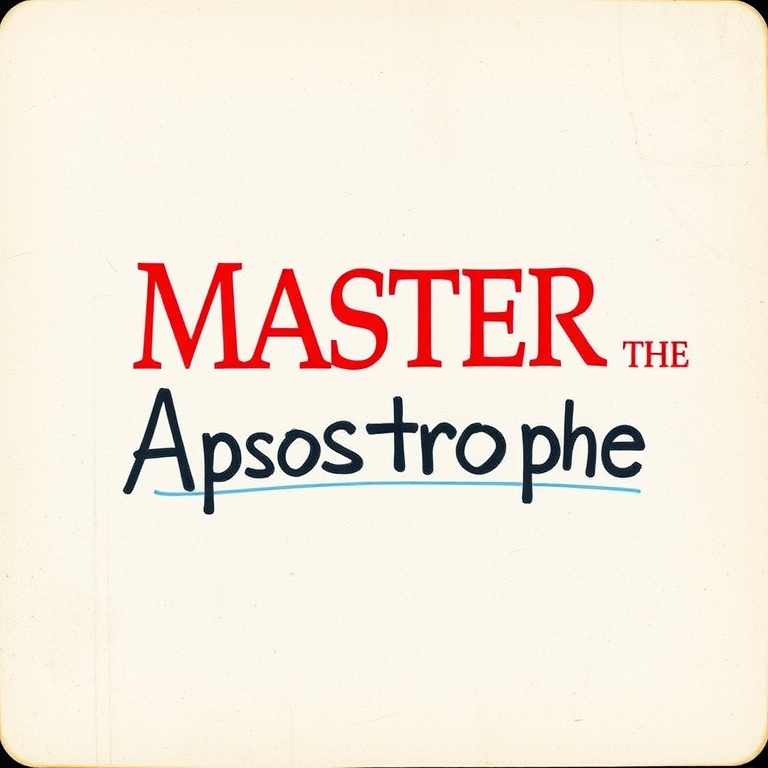
Master the Apostrophe Mastering apostrophes significantly improves your writing clarity. Remember, apostrophes show possession (Sarah’s book) and contractions (can’t, it’s). Practice distinguishing between plural nouns (cats) and possessive singular nouns (cat’s).
For possessive plural nouns ending in ‘s’, add only an apostrophe (the boys’ toys). If the plural noun doesn’t end in ‘s’, add an apostrophe and an ‘s’ (children’s books). It’s helpful to read your work aloud to catch errors; this often highlights awkward phrasing.
Contractions are another common source of apostrophe errors. Use ‘it’s’ only for ‘it is’ or ‘it has’; ‘its’ shows possession (the dog wagged its tail). Pay close attention to words like ‘your’ and ‘you’re’ to ensure correct usage.
Finally, always proofread carefully. Use a style guide as a reference; many online resources offer clear explanations and examples. Consistent apostrophe usage elevates your writing’s professionalism and readability.
-
Hyphenation

Hyphenation Hyphenation can dramatically improve clarity and readability. Use hyphens to join words acting as a single adjective before a noun, such as ‘well-known author’ or ‘fast-moving train.’ Avoid unnecessary hyphens by considering if the words already clearly modify the noun without them.
Compound numbers from twenty-one to ninety-nine should always be hyphenated. Similarly, fractions used as adjectives also require hyphens; for example, ‘one-third full.’ Remember that hyphenation rules can be nuanced, so consult a style guide when in doubt.
When joining prefixes to words, a hyphen often clarifies meaning, especially with prefixes like ‘re-‘, ‘self-‘, and ‘ex-.’ Consider the potential for misinterpretation; for instance, ‘re-sign’ versus ‘resign.’ Consistent hyphenation makes your writing appear more professional and polished.
Use a hyphen to avoid ambiguity or awkward phrasing. For instance, ‘little-known fact’ is clearer than ‘little known fact.’ Mastering hyphenation helps you create clean, crisp sentences that enhance the overall impact of your writing.
-
Consistent Tense
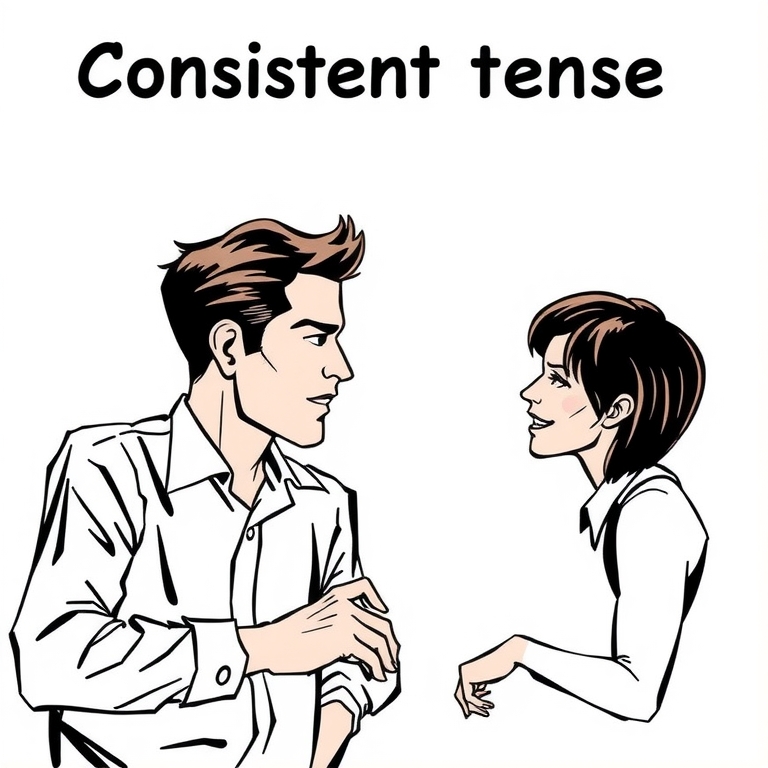
Consistent Tense Maintaining consistent tense is crucial for clear and professional writing. Shifting tenses unnecessarily confuses the reader and disrupts the flow. Stick to either past, present, or future tense throughout your piece, unless there’s a clear reason to change (like describing past events within a present-tense narrative). This consistency enhances readability and strengthens your writing’s impact.
One common error is switching between past and present tense when describing events. For instance, consistently using past tense (‘He walked to the store and bought milk’) is clearer than mixing tenses (‘He walked to the store and buys milk’). Pay close attention to your verb conjugations to ensure accuracy. Review your work carefully to identify and correct any unintentional tense shifts.
Consider using a single tense throughout each paragraph or section. This creates a sense of cohesion. If multiple tenses are needed, ensure transitions are smooth and logical. For example, you might use present tense to describe a general truth and then shift to past tense to recount a specific event related to that truth. Clearly signal these shifts to the reader.
Tools like Grammarly or ProWritingAid can help identify tense inconsistencies. However, don’t solely rely on technology; actively proofread your work, focusing on verb consistency. Practice identifying and correcting tense errors in your own writing and the writing of others. Developing this skill significantly improves your writing quality.
-
Parallel Structure

Parallel Structure Parallel structure makes your writing clearer and more impactful by using the same grammatical form to express related ideas. Instead of listing items with different structures (e.g., ‘I enjoy swimming, to bike, and hiking’), maintain consistency (‘I enjoy swimming, biking, and hiking’). This creates a rhythmic flow that’s easier to read and understand.
Vary your parallel structures to keep your writing engaging. You can use parallel nouns, verbs, adjectives, or phrases. For instance, parallel nouns: ‘She is intelligent, kind, and compassionate.’ Parallel verbs: ‘He runs, jumps, and climbs.’ Experiment to find what fits your style and tone.
Improve clarity by checking for parallelism when you edit. Look for lists or series of ideas. Ensure each item in the list follows the same grammatical pattern. Consider using a consistent tense (past, present, future) and a consistent voice (active, passive).
Mastering parallel structure enhances the overall professionalism of your writing. It demonstrates a keen understanding of grammar and improves the flow and readability of your work. Readers will appreciate the seamless integration of ideas, leading to a better understanding of your message. Use this technique consistently to elevate your writing significantly.
-
Pronoun Agreement

Pronoun Agreement Mastering pronoun agreement ensures your writing is clear and concise. Singular subjects take singular pronouns (he, she, it), while plural subjects take plural pronouns (they, them). Incorrect pronoun agreement creates confusion and weakens your writing’s impact. Remember to identify the subject carefully before selecting the appropriate pronoun.
Collective nouns (team, group) can be tricky. They can take either singular or plural pronouns depending on whether you emphasize the group as a single unit or its individual members. If emphasizing unity, use a singular pronoun; if emphasizing the individuals within, use a plural pronoun. Context is key in these instances.
Pronoun agreement is especially important with indefinite pronouns (everyone, someone, anybody). These are always singular, regardless of how they might sound. Using a singular pronoun with them is crucial for maintaining grammatical accuracy. Avoid common errors by consciously choosing singular pronouns with these words.
When dealing with compound subjects joined by ‘and,’ use a plural pronoun. However, subjects joined by ‘or’ or ‘nor’ take a pronoun that agrees with the closest subject. This rule helps maintain consistency and prevents jarring shifts in your writing’s flow. Practice recognizing these patterns for improved grammatical accuracy.
-
Dangling Modifiers

Dangling Modifiers Dangling modifiers are phrases or clauses that don’t clearly modify the intended word in a sentence. They create confusion and awkwardness. To fix them, ensure the modifier is directly next to the word it describes. This makes the sentence’s meaning immediately clear.
For example, ‘Walking down the street, the dog barked.’ The dog isn’t walking, so it’s a dangling modifier. Correct it to ‘Walking down the street, I heard the dog bark.’ Now the modifier clearly refers to ‘I’.
Another common error is misplacing participial phrases. A phrase like ‘Having finished the assignment,’ should be immediately followed by the person who finished it. Instead of ‘Having finished the assignment, the TV was turned on,’ try ‘Having finished the assignment, I turned on the TV.’
In short, always check that every modifier has a clear and close connection to the word it modifies. Pay attention to sentence structure. Practice reading your writing aloud to catch these issues; your ear will help you identify awkward phrasing.
-
Misplaced Modifiers

Misplaced Modifiers Misplaced modifiers are phrases or clauses that don’t clearly describe the intended word or phrase. They create confusion and awkward sentences. A simple fix is to place the modifier directly next to the word it modifies. This ensures clarity and improves sentence flow.
Consider the sentence, ‘Running down the street, the dog barked loudly.’ This implies the street was running. Instead, write, ‘The dog, running down the street, barked loudly.’ This makes it clear the dog is running, not the street. Always check for misplaced modifiers after writing a sentence.
Dangling modifiers are a special type of misplaced modifier. They lack a clear word to modify. For example, ‘After eating dinner, the movie started.’ Who ate dinner? Rewrite as, ‘After eating dinner, we watched a movie.’ This clarifies the subject.
To avoid misplaced modifiers, carefully review each phrase and clause. Ensure each modifier directly and logically connects to the word it describes. Practice identifying and correcting misplaced modifiers in your own writing, and your clarity will improve significantly. Read your sentences aloud to catch awkward phrasing.
-
Sentence Variety
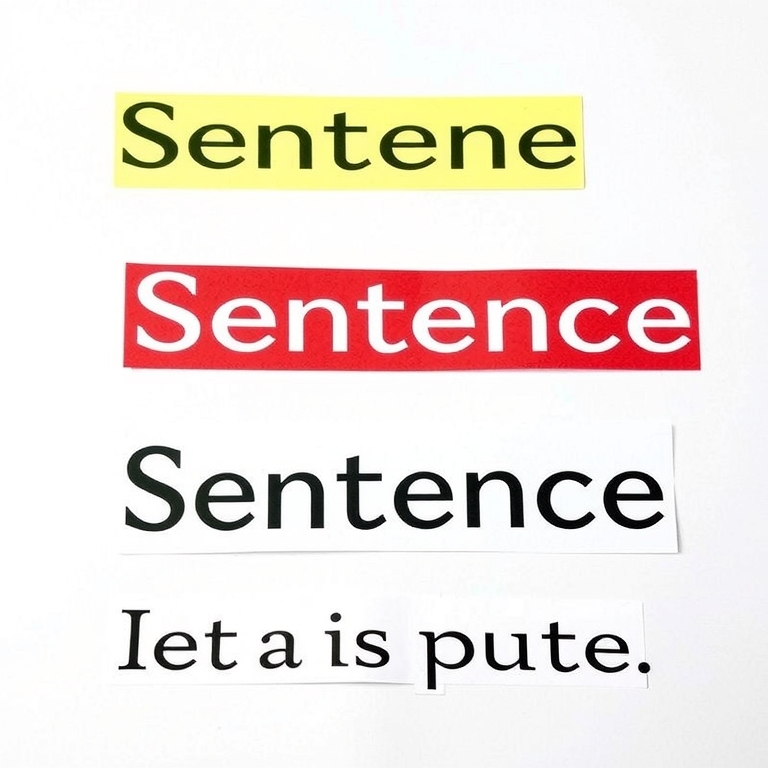
Sentence Variety Vary your sentence structure to keep your writing engaging. Start some sentences with strong verbs or adverbs for emphasis. Experiment with shorter sentences to create impact, contrasting them with longer, more complex ones for a dynamic flow. This variety prevents monotony and keeps the reader interested.
Incorporate different sentence types: simple, compound, and complex. Simple sentences (one independent clause) are great for concise points. Compound sentences (two independent clauses joined by a conjunction or semicolon) provide a balance. Complex sentences (an independent clause and one or more dependent clauses) add depth and nuance to your writing.
Use a mix of active and passive voice. While active voice is generally preferred for clarity and directness, passive voice can be effective when you want to emphasize the action itself, not the actor. Don’t overuse either; strive for a natural balance based on context.
Don’t be afraid to experiment with sentence fragments for stylistic effect, particularly in informal writing. However, use them sparingly. Ensure your overall writing remains clear and avoids any ambiguity caused by unusual sentence structures. A carefully crafted sentence fragment can make a big impact by adding punch or creating emphasis.
-
Avoid Colloquialisms

Avoid Colloquialisms Colloquialisms, or informal language, can detract from the professionalism and clarity of your writing. Replace phrases like “a lot of” with “many” or “numerous.” Instead of “gonna,” use “going to.” This simple swap significantly improves your writing’s tone.
Consider the context of your writing. Academic papers demand formal language; emails to friends allow for more informality. Adapt your language accordingly to maintain consistency and avoid jarring shifts in tone. Remember your audience and their expectations.
To refine your writing, actively identify and replace colloquialisms during editing. Use a thesaurus to find more sophisticated alternatives for overused words or phrases. Practice makes perfect; the more you edit, the better you’ll become at recognizing and correcting informal language.
Finally, reading widely exposes you to diverse writing styles and vocabulary. Pay attention to how authors use formal language in various contexts. This will help you learn to incorporate professional language seamlessly into your own writing, eliminating reliance on colloquialisms.
-
Proofread Carefully

Proofread Carefully Carefully reread your work after a break; fresh eyes catch errors you missed during the initial writing. Use a grammar checker, but don’t rely on it entirely; it’s a tool, not a replacement for careful proofreading. Look for consistent tense and subject-verb agreement throughout your piece.
Read your writing aloud; hearing it spoken reveals awkward phrasing and grammatical inconsistencies more easily than reading silently. Pay close attention to punctuation; a misplaced comma can change the entire meaning of a sentence. Try different fonts or background colors to reduce visual fatigue.
Ask a friend or colleague to proofread; a second pair of eyes often spots mistakes you’ve overlooked. Consider printing your work; this helps in noticing errors you might have missed on screen. Focus on clarity and conciseness; remove unnecessary words and sentences for better readability.
Use a dictionary and thesaurus to verify spelling and word choice; ensure accuracy and precision in your language. Break down complex sentences into simpler ones to improve clarity and understanding. Remember, proofreading enhances credibility and professionalism.
-
Embrace the Power of Editing
Editing is as important as writing. Take time to revise and refine your work.
Multiple rounds of editing often reveal errors you missed initially. Allow time between writing and editing for fresh perspective.
Consider using a professional editor for important documents or projects. A second pair of eyes can make a big difference.
-
Use Online Grammar Tools Wisely

Use Online Grammar Tools Wisely Grammar and spell checkers are helpful tools, but don’t rely on them entirely.
These tools can miss subtle errors or suggest inappropriate changes. Always review their suggestions carefully.
Use them as an aid to catch mistakes, but don’t let them replace your own careful proofreading.
-
Read Widely and Often

Read Widely and Often Reading extensively exposes you to diverse writing styles and enhances your grammar skills.
Pay attention to how authors use grammar and punctuation effectively. Note their stylistic choices.
The more you read, the better you’ll understand and apply grammatical principles in your own writing.
Editor’s Recommendations
- Use a grammar checker, but proofread carefully.
- Read widely to improve your grammar understanding.
- Practice consistently to build your skills.
Conclusion
Improving your grammar is a journey, not a destination. Consistent practice and attention to detail are key.
By applying these 20 grammar hacks, you’ll significantly improve your writing clarity, style, and overall effectiveness.
Embrace these techniques and watch your writing skills flourish! Happy writing!
